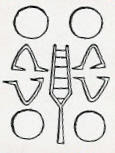Thursday, July 10, 2025
Sunday, April 27, 2025
Sunday, April 20, 2025
Ross : Travelin' Man
and I've made a lot of stops
All over the world
Ross criss-crossed the US constantly.
He knew people in every college town.
Whoa! There's framed photo of Ross
in Bitsy's dorm bathroom!
We were hoping his many friends would find
and comment on this blog
which premiered in 2008.
Thursday, October 10, 2024
10-10-24
Spring Hill Cemetery
Lynchburg, Virginia
Michael Ross McConnell
b. Thursday 10 July 1952
d. Orthodox Easter Sunday 27 April 2008
The
Original
10:10
{Ten Ten}
Man
Wednesday, September 4, 2024
Ross Author Carlo Suarès
Dr. Rips and his colleagues took the 304,805 letters in the Hebrew version of Genesis and arranged them in a grid, without spaces between words. Using a computer, they scanned the text with the caveat that the results could appear forward, backward, diagonally or vertically. The findings of Dr. Rips and his colleagues inspired "The Bible Code" (1997), by Michael Drosnin. See "The Cipher Of Genesis" by Carlo Suarès (1967) purchased near Harvard University, 1975





